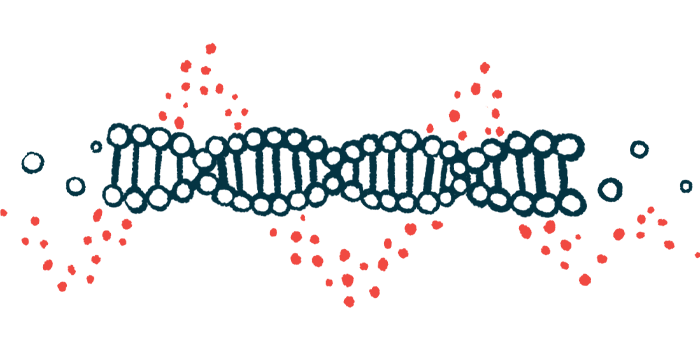New US study offers clues into late onset of Huntington’s disease
Findings help explain why symptoms usually don't start until later in life

In specific brain cells, the mutation that causes Huntington’s disease grows more and more unstable as years go by, according to a study by U.S. researchers that offers new clues into the generally late onset of the neurodegenerative condition.
The findings help to explain why people with Huntington’s don’t usually experience symptoms until the later decades of life. And, they may open new doors toward potentially developing treatments for the disease, the team, led by researchers at the Broad Institute of MIT and Harvard, noted in a Harvard Medical School press release.
“A lot was known about Huntington’s disease before we started this work, but there were gaps and inconsistencies in our collective understanding,” said Robert E. Handsaker, senior principal software engineer at Broad and the study’s co-first author.
Now, Handsaker said, “we’ve been able to piece together the full trajectory of the pathology [disease development] as it unfolds over decades in individual neurons, and that gives us potentially many different time points at which we can intervene therapeutically.”
According to the researchers, “the most important implication of our findings may be for developing therapies for [Huntington’s disease].”
The study, “Long somatic DNA-repeat expansion drives neurodegeneration in Huntington’s disease,” was published in Cell.
Investigating possible reasons for late onset of Huntington’s disease
Huntington’s is caused by expansion mutations in the gene HTT. This gene contains a trinucleotide repeat, in which three building blocks of DNA — cytosine, adenine, and guanine, abbreviated CAG — are normally repeated several times. In people with Huntington’s, there are an excessive number of these repeats, usually 40 or more. This expansion mutation leads to damage to part of the brain called the striatum, ultimately driving disease symptoms.
Although it’s well-established that the CAG expansion mutation causes Huntington’s, one question has been hard for scientists to answer: If the mutation is present from the moment someone is born, then why do most people with Huntington’s not experience disease onset, or, specifically, have any symptoms, until well into adulthood? The new study may have found an answer.
The team, from Broad, Harvard Medical School, and McLean Hospital, conducted detailed tests examining the HTT gene in individual brain cells collected from people with or without Huntington’s. In addition to looking at the gene, they also examined the cells’ transcriptional activity, or how active the gene was.
“The ability to take a particular cell and measure both the CAG length and the transcriptional profile — that’s a really important underpinning that’s allowed for really powerful analysis,” said Seva Kashin, a senior principal software engineer at Broad and also co-first author of the study.
This revealed that, in most brain cells, the CAG repeat stays largely unchanged over time. But in a specific set of cells in the striatum, called striatal projection neurons or SPNs, there were often hundreds of these repeats — far more than people are usually born with, suggesting that the repeat is getting larger over time in these specific cells, the researchers found.
Further experiments showed that, when there are fewer than 150 repeats, SPNs don’t generally experience any problems. But once there are more than 150 repeats, the cells start to sicken and die.
“It’s only when the repeat becomes extremely long that it begins to cause harm,” said Steve McCarroll, PhD, co-senior author at Broad.
Researchers find CAG repeat mutation expands faster over time
Additional computer modeling showed that, in early life, the CAG repeat in SPNs grows quite slowly, expanding less than once per year. But once the mutation gets to a certain size, with about 80 repeats in total, it starts to expand faster and faster.
Taking these observations together offers a potential explanation for why Huntington’s symptoms don’t develop until later in life, leading to the typically late onset of the disease. Specifically, the CAG repeat gets longer in SPNs over time, and it’s only once the repeat reaches a critical size that it starts to cause damage.
This is a really different way of thinking not only about how Huntington’s disease develops but also about how a mutation brings about a disease. … We’re hopeful that understanding … the central disease-driving process leads to deep focus and new options [for treatment].
The researchers dubbed this model “extra-long repeats acquire toxic effect” — or ELongATE for short.
“This is a really different way of thinking not only about how Huntington’s disease develops but also about how a mutation brings about a disease,” McCarroll said.
He added: “We think that it will apply in DNA-repeat disorders beyond Huntington’s disease.”
The scientists noted that there are still many questions to be answered, such as why the CAG expansion occurs in SPNs but not other types of brain cells, and why exactly the extra-long gene becomes toxic.
Still, this finding implies that it might be possible to stop the onset of Huntington’s by preventing the expansion of the CAG repeat — and since it takes a long time for this expansion to reach the point that it becomes toxic, there’s theoretically a large window to intervene.
“It’s going to take much scientific work by many people to get to treatments that slow the expansion of DNA repeats,” McCarroll said. “But we’re hopeful that understanding this as the central disease-driving process leads to deep focus and new options.”








